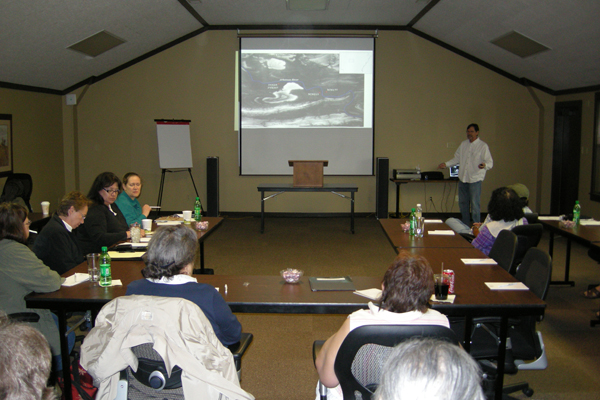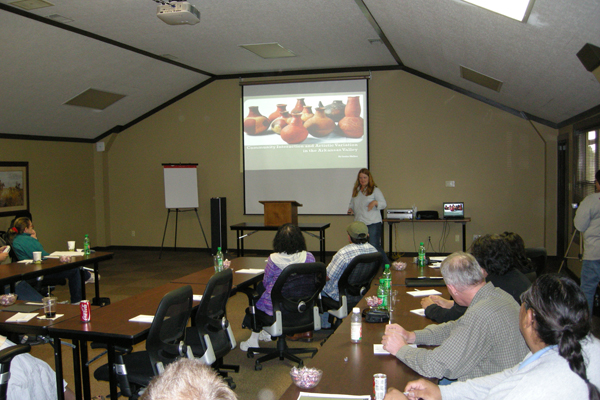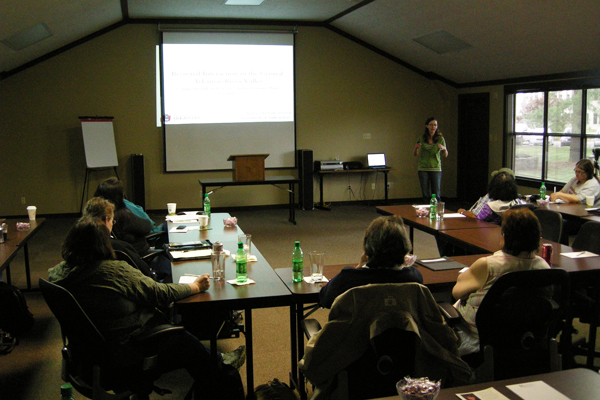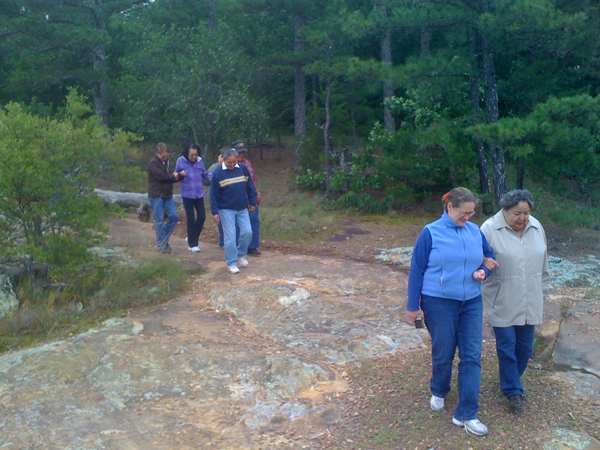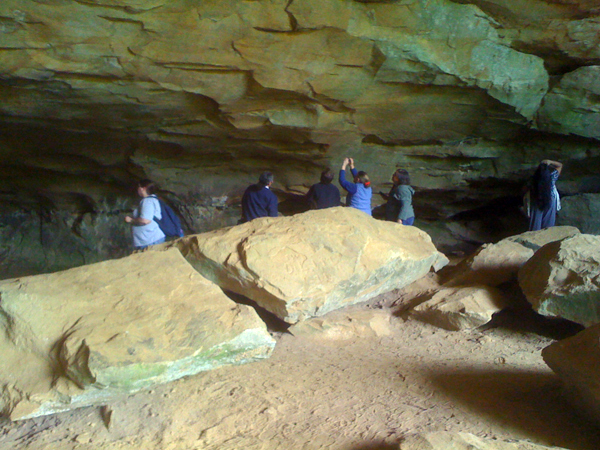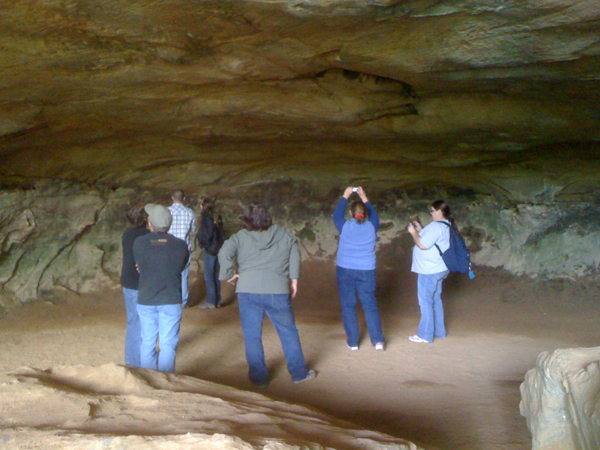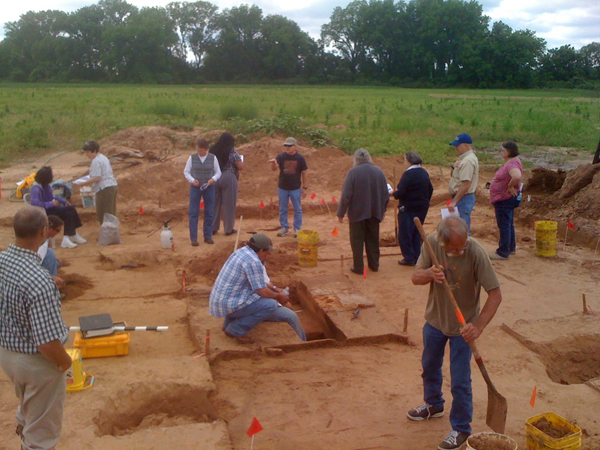Year 2 Project Meeting
The Year 2 project consultation meeting was held May 25 – 27, 2011, at the University of Arkansas Winthrop Rockefeller Institute on Petit Jean Mountain. Participants from the Arkansas Archeological Survey included Thomas Green (Director), Ann Early (State Archeologist), and project team members Mike Evans, Jerry Hilliard, Aden Jenkins, Jared Pebworth, Larry Porter, George Sabo, and Skip Stewart-Abernathy. University of Arkansas graduate students Leslie Walker and Adam and Rebecca Wiewel also attended. Arkansas Archeological Society volunteer Don Higgins, Natural Resources Conservation Service archeologist John Riggs, and State Conservationist Mike Sullivan were also on hand. Caddo Nation representatives included Mary Botone (Historic Preservation Program), Marjorie Brown, Robert Cast (Tribal Historic Preservation Officer), Doyle Edge, Madeline Hamilton, Bobby Gonzalez (NAGPRA Coordinator), Lymon Kionute, Kim Penrod (Caddo Heritage Museum Director), Marilyn Threlkeld, and Lucy Waubaunasee. The Osage Nation was represented by Dr. Andrea Hunter (Tribal Historic Preservation Officer and project co-principle investigator), Rebecca Brave, Anita Fields, Gina Gray, Kathryn Red Corn, and Anita West. The Quapaw delegation was unable to attend because of adverse weather conditions affecting travel. The meeting began with an overview by Sabo of project activities completed to date. Dr. Jami Lockhart (project co-principle investigator) then discussed the remote sensing work we are conducting to identify buried house remains and to provide a database of locational information on cultural features so they can be more effectively protected.
Leslie Walker and Rebecca Wiewel next outlined their prospective dissertation topics. Walker plans to examine ceramic assemblage variability across individual houses at 3YE25 and across individual sites in the larger study area. Wiewel hopes to undertake Instrumental Neutron Activation Analysis of ceramic samples from our excavations at 3YE25 to determine where vessels representing specific household assemblages were made. Both projects may help us answer questions concerning the cultural identity of Carden Bottoms phase people. Extensive and productive discussions of these and other aspects of the project followed. All of the tribal representatives agreed to write letters of support for our graduate student applications for grant funding to pursue their projects.
In addition to the meeting at the WRI facility, we made two field trips to visit local archeological sites. First, we visited Rock House Cave (3CN20), a large rock shelter located in Petit Jean State Park that contains the largest assemblage of rock art images (103) of any site in Arkansas, the majority rendered as pictographs, or painted images. In addition to abstract and geometric motifs, there are illustrations of anthropomorphs, animals, and crafted objects, including a paddlefish and fish trap panel.
Next we visited 3YE25, where excavations of House 3 were underway. These visits provided an opportunity for extensive discussions of the importance of archeological sites to the modern Caddo, Osage, and Quapaw communities.
A highlight of the conference was a final evening campfire at WRI, hosted by Survey station archeologist Skip Stewart-Abernathy. |
||||||||||||||
 |

|
